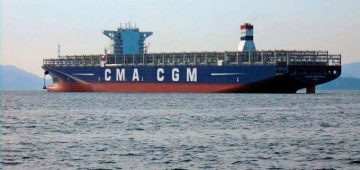I am sure many of you have been to your local park on a weekend morning and have seen many men and boys with their remote controlled boats in the pond. A handset makes these small boats do any manoeuvre that the owner requires.
So if this can be achieved at this level why not on larger ships? Recently, much research has been done regarding remote control or even totally unmanned vessels.
A remote controlled ship is still very much a concept rather than a practical reality, but that doesn’t mean we should be writing it off.
Automated technology is already a major part of the modern shipping industry. We have unmanned engine rooms, electronic navigation and remote tracking and monitoring of vessels. The Maersk ‘E’ class container ships operate with a crew of just 13 which includes catering staff and the newer and larger ‘Triple E’ class ships can operate with a similar size crew. This shows how much is done aboard by automated technology. Remember, in the post-war year, a cargo ship of 7,000 gross tons would require a crew of over 50!
The Maritime Unmanned Navigation through intelligence in Networks (MUNIN) has stated:

Next generation modular control systems and communications technology will enable wireless monitoring and control functions both on and off board. These will include advanced decision support systems to provide a capability to operate ships remotely under semi or fully autonomous control.
They go on to say that there are two generic alternatives that are combined in an autonomous ship, i.e., the remote ship where the tasks of operating the ship are performed via a remote control mechanism e.g. by a shore based human operator and the automated ship where advanced decision support systems on board undertake all the operational decisions independently, without the intervention of a human operator.
Properly implemented, this type of autonomy will reduce the need for human supervision while maintaining a high and well defined level of safety.
This already happens with aircraft which are now automated for take-off and landing as well as the auto-pilot flying the plane in mid-air and keeping the correct course. They do however have the option of a manual over-ride, which unfortunately led to the well publicised Germanwings crash in March.
Google has developed technology for driverless cars and these are now legal in four U.S. States.

This technology is the way things will develop in the future, but personally I am happier to see experienced deck officers in charge of my ship.



Comments
Sorry, comments are closed for this item